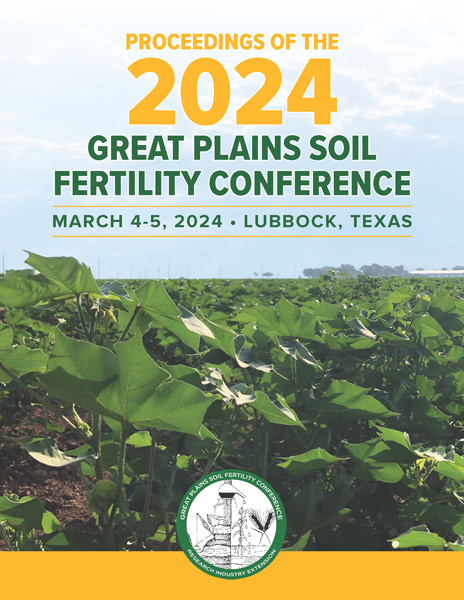Conference Proceedings Available!
Proceedings
Authors
| Filter results5 paper(s) found. |
|---|
1. Strategic Tillage Effects on Crop Yield and Soil Properties and Dryland Crop RotationsThis study evaluated strategic tillage (ST) to control HR weeds and improve crop yields in an otherwise long-term no-till (NT) soil. Treatments were five crop rotations: 1) continuous winter wheat (Triticum aestivum L.) (WW); 2) wheat-fallow (WF); 3) wheat-sorghum (Sorghum bicolor L.)-fallow (WSF); 4) continuous sorghum (SS); and 5) sorghum-fallow (SF) as main plots. The sub-plot were reduced tillage (RT), continuous NT, and ST of NT. Results showed tillage (ST or RT)... A. Obour, J. Holman, L. Simon, A. Schlegel |
2. Long-term Forage Rotation Yields, Soil Water Use, and ProfitabilityForages are important for the region’s livestock industry and are becoming increasingly important as irrigation capacity and grain prices decrease. Forages require less water than grain crops and may allow for increasing cropping system intensification and opportunistic cropping. A study was initiated in 2012 at the Southwest Research-Extension Center near Garden City, KS, comparing several 1-, 3-, and 4-year forage rotations with no-tillage and minimum-tillage. Data presented are from 2013... J. Holman, A. Obour, A. Schlegel, L. Simon |
3. Long-term Cover Crop Effects on Soil Organic Carbon, Nitrogen Stocks, and Water Stable Aggregates in the Semiarid Central Great PlainsGrowing cover crops (CC) in semiarid dryland cropping systems in the central Great Plains (CGP) may provide several benefits to soil health. This study examined long-term CC management effects on soil health in a no-till winter wheat (Triticum aestivum L.)–grain sorghum (Sorghum bicolor L.)–fallow (WSF) cropping system in southwestern Kansas. The experimental design was a split-split-plot randomized complete block with four replications. Main plots were... L. Simon, A. Obour, J. Holman, K. Roozeboom |
4. Soil Properties Affected by Grazing and Tillage of Annual ForagesNo-till (NT) management of annual crop production systems increases precipitation capture and storage. However, compaction with annual livestock grazing and the development of herbicide resistant weeds present challenges to long-term NT. An on-farm study was established in 2016 near Jetmore, KS to investigate the influence of annual tillage with a sweep plow compared to NT in a grazed continuous winter triticale production system. Forage productivity as well as weed density and soil properties... P. Mauler, J. Holman , A. Obour , L. Simon, K. Roozeboom |
5. Soil Properties and Winter Wheat Nutrient Uptake As Affected by Long-term Tillage and Nitrogen FertilizationKnowledge gained on the long-term effects of crop management practices on soil fertility is critical in developing nutrient management strategies to optimize crop yields and environmental sustainability in semi-arid cropping systems. This study examined the long-term effects of nitrogen (N) fertilizer management and tillage intensity [conventional tillage (CT), and no-tillage (NT)] on soil properties and nutrient uptake in a dryland wheat-sorghum-fallow cropping system. Results showed winter wheat... A. Obour, J. Holman, L. Simon, Y.M. Assefa |
